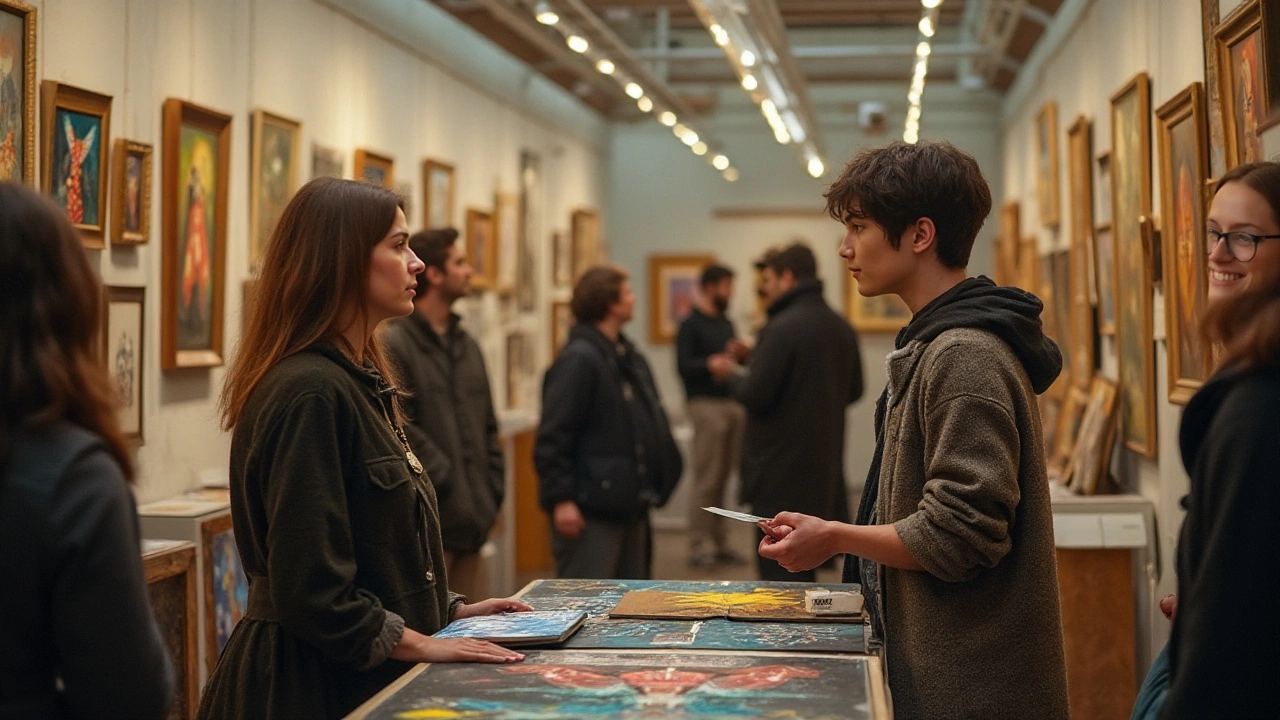Artist Revenue – How to Grow Your Income as an Artist
Making a living as an artist feels like a juggling act. You have the creative side, the business side, and the days when bills just keep coming. The good news is that most successful artists use a mix of income streams instead of relying on one thing. Below you’ll find the most common ways artists earn money and real‑world steps you can start using today.
Top Income Sources for Artists
Commissioned portraits are still a big money‑maker. People love having a custom piece, and you can set clear prices based on size, media, and the time it takes. Our post “Portrait Painter Prices UK” breaks down the numbers for 2025, so you know what other artists charge.
Limited‑edition prints, especially Giclée prints, add a recurring revenue stream. The “How to Identify Genuine Giclée Prints” article shows what collectors look for, which helps you price your prints higher and avoid cheap knock‑offs.
Teaching workshops or online classes can fill gaps between big projects. Whether you teach beginners how to fix oil‑painting mistakes or run a sculpture basics session, you get paid for sharing your skills and build a community that may later buy your work.
Licensing your art for products, book covers, or digital use adds passive income. Even a simple abstract painting can become a phone case design if you partner with a print‑on‑demand service.
Practical Steps to Raise Your Earnings
Start by tracking every dollar that comes in and goes out. A spreadsheet or a free app lets you see which revenue stream is strongest and where you’re overspending on supplies. The “Cheapest Materials for Sculpture” guide gives ideas for cutting costs without hurting quality.
Price with confidence. Look at market rates, add a profit margin, and don’t be afraid to ask for deposits. Using a tiered pricing model—basic, standard, premium—lets clients choose what fits their budget while you keep the higher‑margin options visible.
Promote your work where buyers already hang out. Social media, local galleries, and niche forums (like the ones for modern art collectors) are free advertising spaces. Share behind‑the‑scenes photos, short videos of you working, or quick tips from posts like “How to Fix Mistakes in Oil Painting.”
Offer packages that combine services. A portrait commission could include a signed print, a short video of the process, and a mini‑workshop for the buyer’s friends. Bundles increase the total sale and make the client feel they’re getting extra value.
Finally, keep learning. Trends shift fast—digital, AI, and NFT art are reshaping the market, as shown in the “Most Modern Art Styles” article. Even if you don’t dive deep into NFTs, knowing the buzz helps you talk to collectors who are curious about new formats.
Bottom line: diversify, price smart, and market consistently. By mixing commissions, prints, teaching, and licensing, you create a safety net that smooths out the slow months and lets you focus on what you love—making art.

4 Dec 2024
Understanding the commission rates taken by galleries is crucial for artists planning to showcase their work. These rates can vary widely, typically ranging from 40% to 60%, but several factors influence these numbers. This article explores what determines the cut galleries take, how it impacts artists, and offers insights on navigating these financial agreements effectively. Artists can learn to negotiate terms and maximize exposure and profit from gallery partnerships.
Continue reading...
